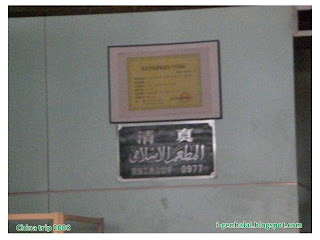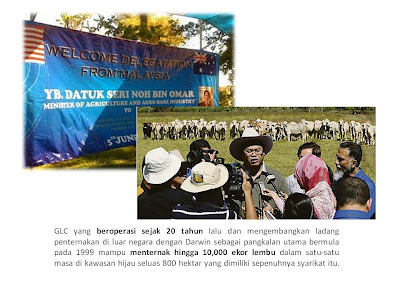 Shandong
Shandong
Shandong (Cina Ringkas: 山 东; Cina Tradisional: 山東; pinyin: Shāndōng) ialah sebuah wilayah di pantai timur Republik Rakyat China. Singkatannya ialah Lu, bersempena negeri Lu yang pernah didirikan di sini sewaktu Zaman Musim Bunga dan Musim Luruh1.
Nama Shandong bererti "timur gunung", iaitu kedudukan wilayah ini di timur Pergunungan Taihang. Wilayah ini terletak di kawasan-kawasan hilir sungai Huang He (Sungai Kuning) dan menganjur hingga ke laut dalam bentuk Semenanjung Shandong. Shandong bersempadan dengan Teluk Bohai di utara, Hebei di barat laut, Henan di barat, Jiangsu di selatan, dan Laut Kuning di tenggara; wilayah ini juga berkongsi sempadan yang amat pendek dengan Anhui, di antara Henan dan Jiangsu.
Shandong juga diberi nama jolokan Qílǔ (Cina Tradisional: 齊魯, Cina Ringkas: 齐 鲁), bersempena negeri Lu dan negeri Qi yang pernah wujud di kawasan ini ketika Zaman Musim Bunga dan Musim Luruh.
Shandong is a province located on the eastern coast  of the People's Republic of China. Shandong has played a major role in Chinese history from the beginning of Chinese civilization along the lower reaches of the Yellow River and served as a pivotal cultural and religious site for Taoism, Chinese Buddhism, and Confucianism. Shandong's Mount Tai is the most revered mountain of Taoism and one of the world's sites with the longest history of continuous religious worship. The Buddhist temples in the mountains to the south of the provincial capital of Jinan where once among the foremost Buddhist sites in China. The city of Qufu is the birthplace of Confucius that was later established as the center of Confucianism. Shandong's location at the intersection of ancient as well as modern north-south and east-west trading routes have helped to establish it as an economic center.
of the People's Republic of China. Shandong has played a major role in Chinese history from the beginning of Chinese civilization along the lower reaches of the Yellow River and served as a pivotal cultural and religious site for Taoism, Chinese Buddhism, and Confucianism. Shandong's Mount Tai is the most revered mountain of Taoism and one of the world's sites with the longest history of continuous religious worship. The Buddhist temples in the mountains to the south of the provincial capital of Jinan where once among the foremost Buddhist sites in China. The city of Qufu is the birthplace of Confucius that was later established as the center of Confucianism. Shandong's location at the intersection of ancient as well as modern north-south and east-west trading routes have helped to establish it as an economic center.
After a period of political instability and economic hardship that began in the late 19th century, Shandong has emerged as one of the most populous (94 million in 2008) and most affluent provinces in the People's Republic of China (GDP of 3.38 trillion CNY in 2009). Shandong is the third most populous province of China, after Guangdong and Henan. Over 99% of Shandong's population is Han Chinese. Minority groups include the Hui and the Manchus.
(1Zaman Musim Bunga dan Musim Luruh = (English) The Spring and Autumn Period was a period in Chinese history that roughly correspondse to the first half of the Eastern Zhou dynasty (from the second half of the 8th century BC to the first half of the 5th century BC). Its name comes from the Spring and Autumn Annals, a chronicle of the state of Lu between 722 and 479 BC, which tradition associates with Confucius. The period itself lasted from 770 to 476 BC. During the Spring and Autumn period, China was ruled under a feudal system. The Zhou Dynasty kings held nominal power but only directly ruled over a small royal demesne centered on their capital (modern-day Luoyang).
As the era unfolded, larger and more powerful states annexed or claimed suzerainty over smaller ones. By the 6th century BC, most small states had disappeared, and a few large and powerful principalities dominated China. Wars were undertaken to oppose some of states (claimed independence from the Zhou). A series of civil wars resulted in the splitting of Jin into three smaller states by the beginning of the fifth century. The control that the Zhou kings exerted over the feudal princes slowly - but inexorably - faded. Eventually the nominal Zhou kings lost all real influence, the feudal system crumbled, and the Warring States Period began.)
Shandong has a temperate climate, with moist summers and dry, cold winters. Average temperatures are -5 to 1°C in January and 24 to 28°C in July. Annual precipitation is 550 to 950 mm.
The politics of Shandong is structured in a dual party-government system like all other governing institutions in mainland China. The Governor of Shandong is the highest  ranking official in the People's Government of Shandong. However, in the province's dual party-government governing system, the Governor has less power than the Shandong Communist Party of China Provincial Committee Secretary, colloquially termed the "Shandong CPC Party Chief".
ranking official in the People's Government of Shandong. However, in the province's dual party-government governing system, the Governor has less power than the Shandong Communist Party of China Provincial Committee Secretary, colloquially termed the "Shandong CPC Party Chief".
Shandong is divided into seventeen prefecture-level divisions. The seventeen prefecture-level divisions of Shandong are subdivided into 140 county-level divisions (49 districts, 31 county-level cities, and 60 counties). Those are in turn divided into 1941 township-level divisions (1223 towns, 293 townships, two ethnic townships, and 423 subdistricts).
Mandarin dialects are spoken in Shandong (Ji Lu Mandarin = in the northwest; Zhongyuan Mandarin = in the southwest; and Jiao Liao Mandarin = in the Shandong Peninsula. Shandong cuisine (鲁菜) is one of the eight great traditions of Chinese cuisine (Shandong cuisine (e.g. Jinan cuisine); the seafood-centered Jiaodong cuisine in the peninsula; and Confucius's Mansion cuisine, an elaborate tradition originally intended for imperial and other important feasts).
Weifang
Weifang (simplified Chinese: 潍坊; traditional Chinese: 濰坊; pinyin: Wéifāng) is a prefecture-level city in central Shandong province, People's Republic of China. It borders Dongying to the northwest, Zibo to the west, Linyi to the southwest, Rizhao to the south, Qingdao to the east, and looks out to the Laizhou Bay to the north.

Weifang is a historical city with well known figures. Emperor Shun of the Three Sovereigns and Five Emperors period, the politician Yan Ying (晏婴) of the Spring and
Autumn Period, the Confucian scholar Zheng Xuan of the Eastern Han Dynasty and the agriculturist Jia Simiao of the Northern Wei Dynasty were all from Weifang. Kong Rong, Fan Zhongyan, Ouyang Xiu, Su Dongpo, Zheng Banqiao, et al. have worked in Weifang historically. In more recent years, revolutionists, littérateurs and artists, such as Wang Jinmei, Chen Shaomin, Wang Yuanjian, Wang Tongzhao, Zang Kejia are well known in China. Weifang also boasts of historical relics and other tourist sites, such as Shihu Garden (from the Late Ming and early Qing Dynasty), Fangong Pavilion (from the Song Dynasty), fossile sites (including dinosaur fossils, in Shanwang, Linqu), Mount Yi National Forest Park, Mount Qingyun and the Old Dragon Spring.
The prefecture-level city of Weifang administers 12 county-level divisions (out of 140 in China), including 4 districts, 6 county-level cities and 2 counties.
The city is home to the large diesel engine company and factory Weichai. The village of Yangjiabu in Hanting District is famous for folk wood-block print (nianhua) and kite production. Weifang is the world/ international capital of kites, it is the headquarters of International Kite Federation. Weifang host the International Kite Festival every year (the first International Kite Festival was held in 1984). Kite-flying is a traditional custom among the people in Weifang in spring time (Other cultures including Annual Broad of Yangjiabu (杨家埠木版年画), one of the three most famous Chinese folk paintings in history which reached the peak of its development during the Qing Dynasty and Paper cutting in Gaomi (高密剪纸), handicraft with unique styles, such as strong contrast in color, straight and simple line and exaggerated outline).
Sumber :
1. http://en.wikipedia.org/wiki/Weifang
2. http://en.wikipedia.org/wiki/Shandong
Bacaan tambahan:
3. http://ms.wikipedia.org/wiki/Republik_Rakyat_China
4. http://ms.wikipedia.org/wiki/China
5. http://en.wikipedia.org/wiki/China
6. http://en.wikipedia.org/wiki/People%27s_Republic_of_China






















.JPG)





